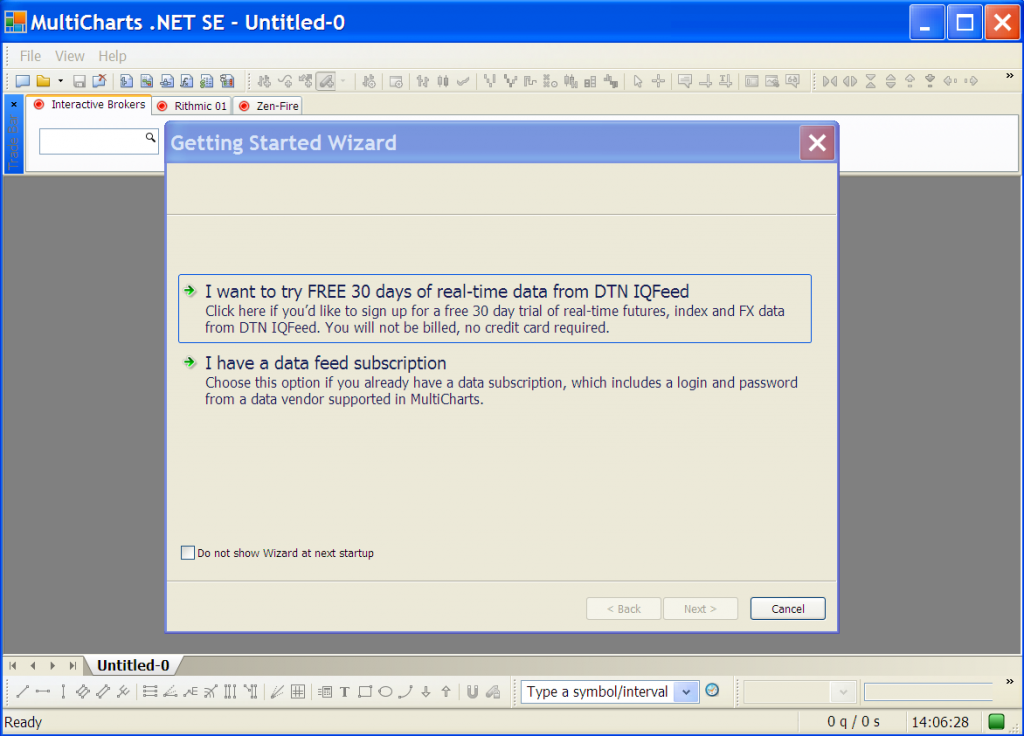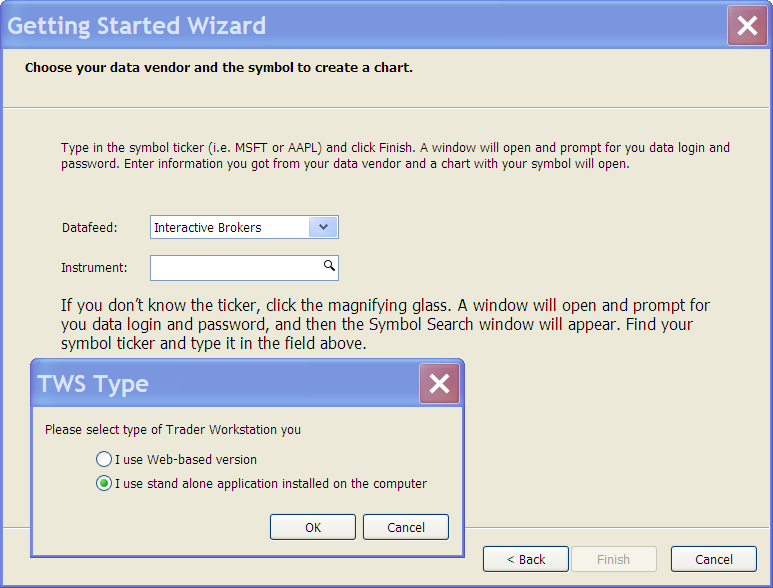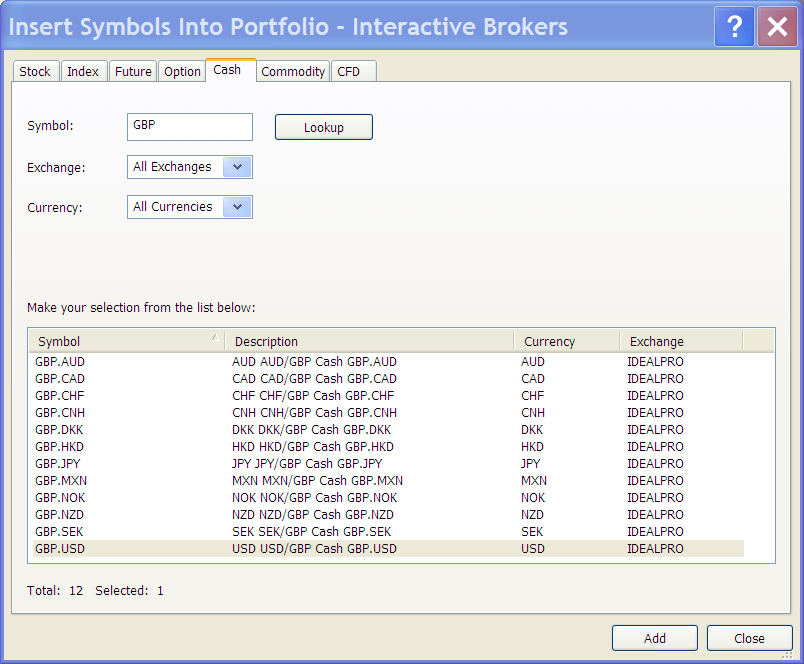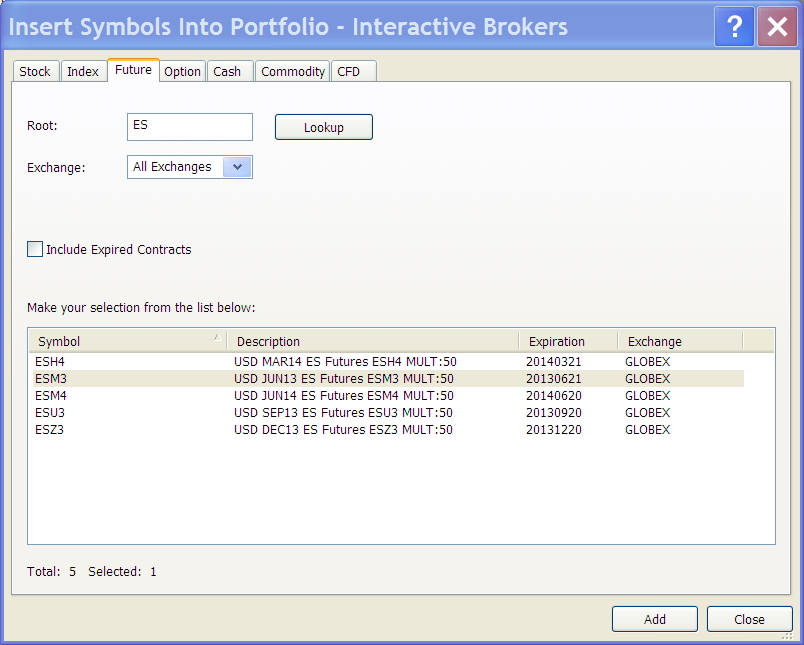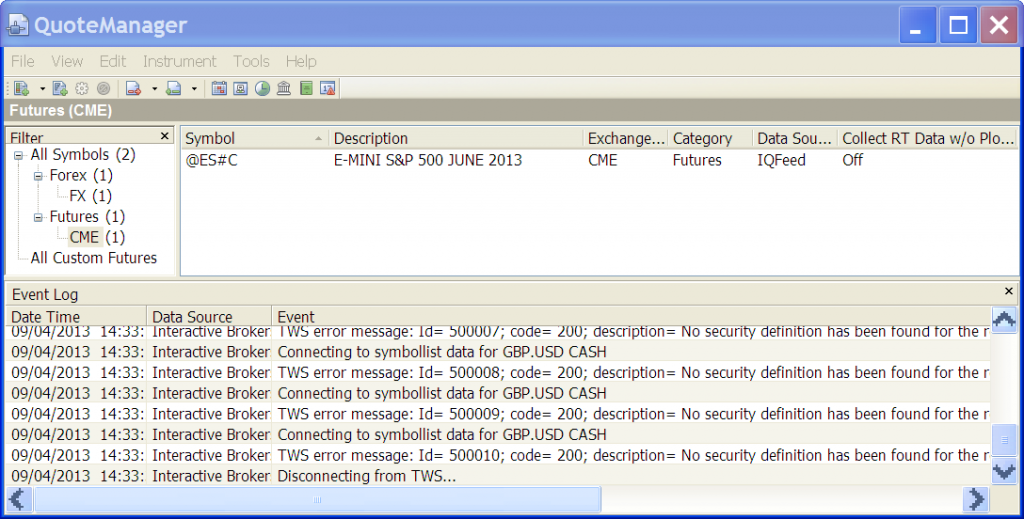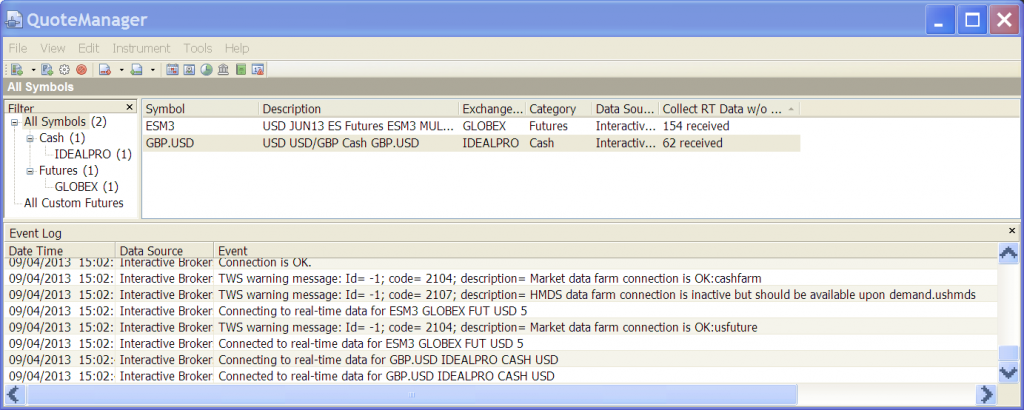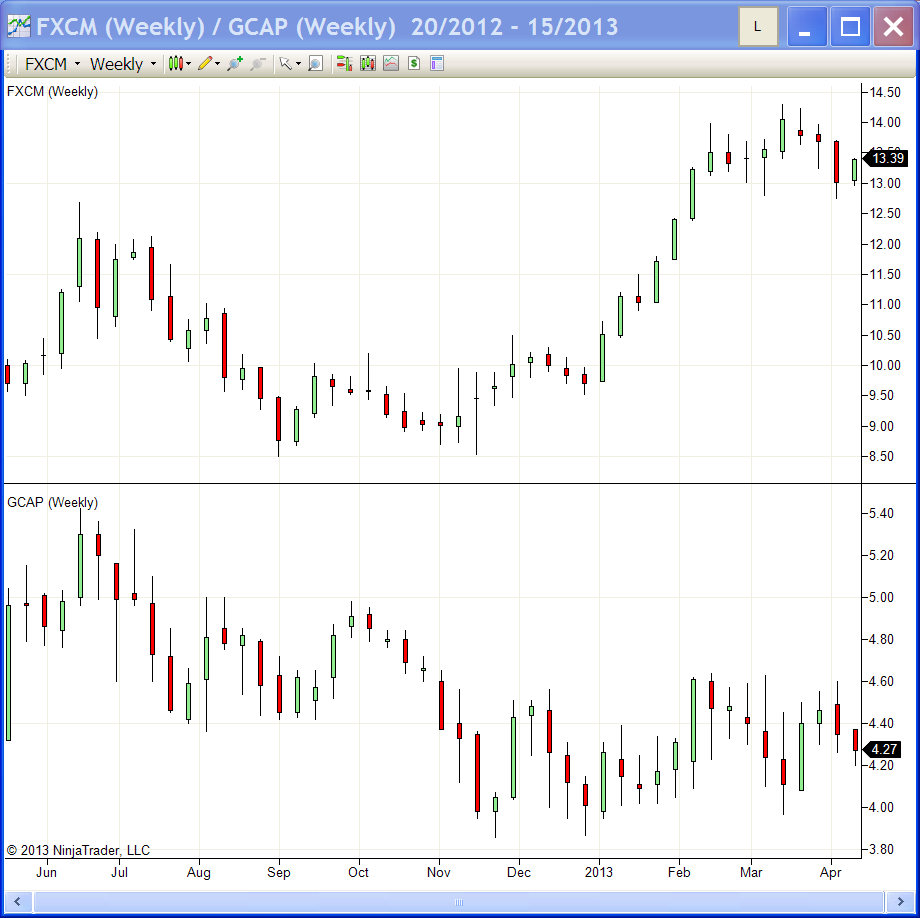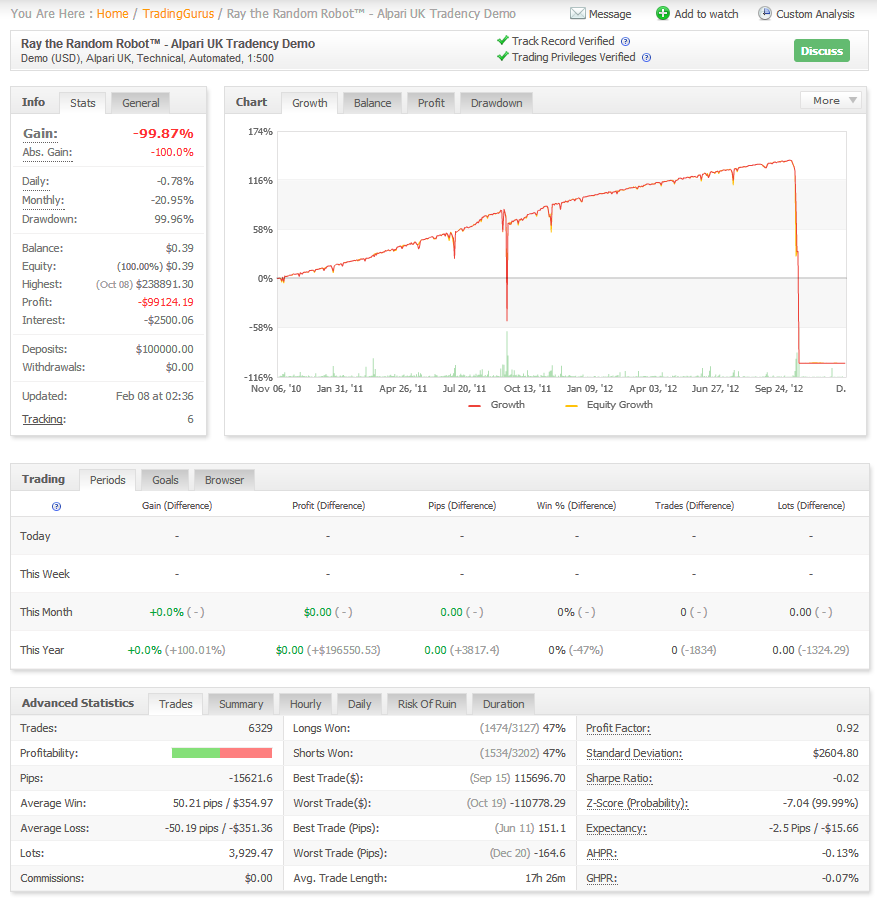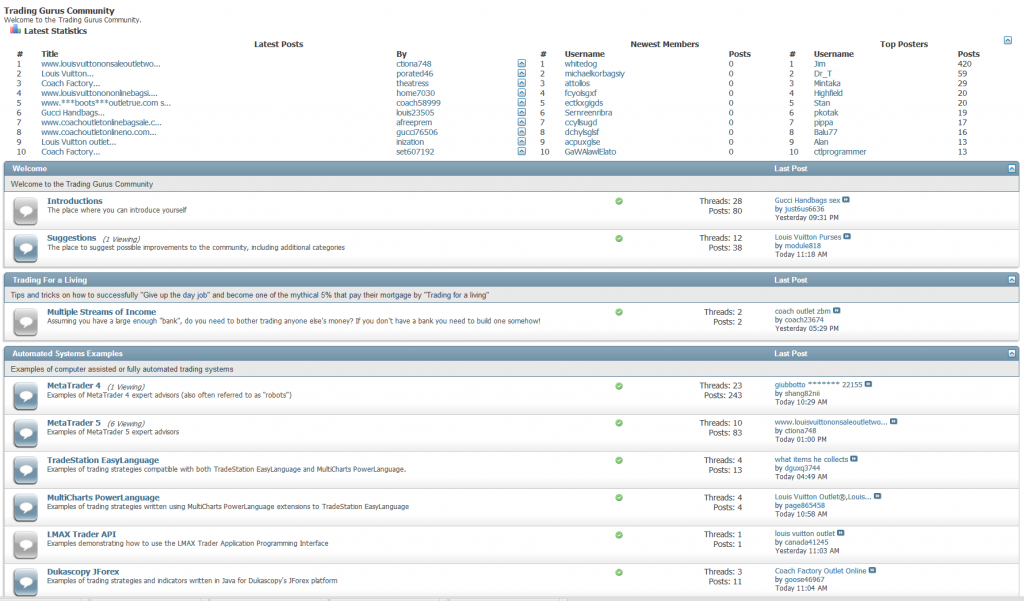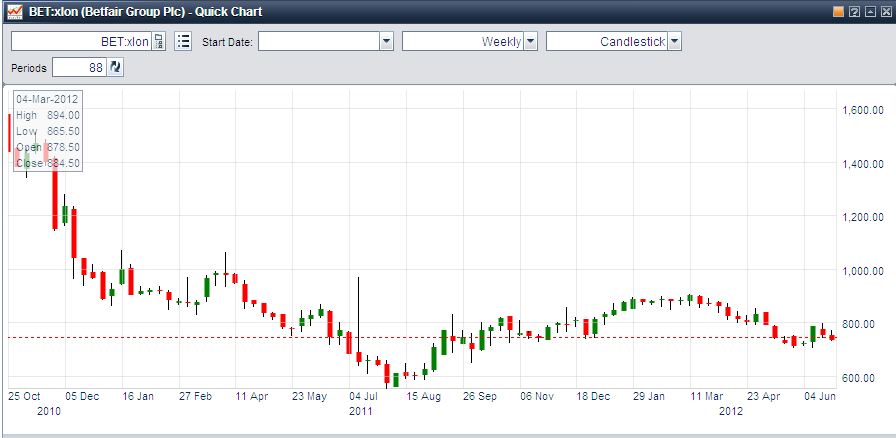It's all go today. I've only just finished blogging about connecting a new trading platform to one of my own brokers, and now I find said broker is in the news for a very different reason. The U.S. Commodity Futures Trading Commission have just issued a press release announcing that they have:
Today issued an Order requiring Interactive Brokers LLC (IB) of Greenwich, Conn., to pay a $225,000 civil monetary penalty for failing to calculate the amount of customer funds on deposit, the amount of funds required to be on deposit in customer segregated accounts, failing to maintain sufficient U.S. dollars (USD) in customer segregated accounts in the United States to meet all USD-denominated obligations, and supervision failures. The CFTC’s Order also requires IB to cease and desist from violating CFTC Regulations, as charged.
According to their website Interactive Brokers have been:
Rated Best Online Broker for the Second Year in a Row by Barron's 2013
and:
For 36 years the IB Group has been building electronic access trading technology that delivers real advantages to traders, investors and institutions worldwide. Interactive Brokers Group and its affiliates' equity capital exceeds $4.8 billion. We are the largest US electronic broker based on daily average revenue trades executing 407,000 trades per day.
Despite that reputation and all that equity capital, IB have fallen foul of the CFTC who find (with IB's assistance!) that:
From at least January 2008 through at least April 4, 2011, IB failed to compute as of the close of business each day, on a currency-by-currency basis, the amount of customer funds required to be on deposit and the amount of customer funds actually on deposit in segregated accounts on behalf of commodity and options customers.
Additionally, between September 21, 2011 and May 8, 2012, IB improperly covered a portion of its USD commodity futures and options customer obligations with Japanese yen and Swiss francs to maximize its interest earnings and not at the request of any of its commodity customers. As a result, IB did not retain enough USD in segregation to meet its USD-denominated obligations to its commodity customers – with the USD segregation requirement shortfall ranging from approximately $90 million to $300 million during that time, according to the Order. IB discovered and self-reported this violation to the CFTC on May 10, 2012; however, IB had excess segregated funds ranging from $48.4 million to $455.3 million at all relevant times.
The Order itself goes into a bit more detail than the CFTC's press release, and reveals that:
From at least January 2008 until at least April 4, 2011, IB failed to compute as of the close of business each day, on a currency-by-currency basis, the amount of customer funds required by the Act and Regulations to be on deposit and the amount of customer funds on deposit in segregated accounts on behalf of commodity and options customers. Rather, IB only prepared such segregation calculations on an overall, USD-equivalent basis, in violation of Regulation 1.32(a).
From September 21,2011 to May 8, 2012, IB covered a portion of its USD commodity futures and options customer obligations with Japanese yen and Swiss francs. It did not do so at the request of any of its commodity customers but rather to maximize its interest earnings, in violation of Regulation 1.49(b ). As a result, IB did not retain enough USD in segregation to meet its USD denominated obligations to its commodity customers, in violation of Regulation 1.49(e). The shortfall in USD requirement ranged from approximately $90 million to $300 million during that time. IB discovered and self-reported the violations of Regulation 1.49 to the Commission on May 10,2012. During the time period of the violations of Rule 1.49, IB had excess segregated funds on deposit in customer segregated accounts (including USD plus other currencies) of between $ 48.4 MM and $ 455.3 MM.
Prior to May 9, 2012, IB did not have procedures in place to ensure compliance with Regulations 1.49 and 1.32. In fact, IB was not aware of its obligations under Regulation 1.49 until May 2012. Moreover, IB further failed to adequately train and diligently supervise its officers, employees, and agents to ensure compliance with Regulations 1.32 and 1.49, in violation of Regulation 166.3. IB independently implemented corrective measures after discovering the violations; and IB cooperated with the Division in investigating the circumstances.
The Order also reveals that:
In anticipation of the institution of an administrative proceeding, Respondent has submitted an Offer of Settlement ("Offer"), which the Commission has determined to accept. Without admitting or denying any of the findings or conclusions herein, Respondent consents to the entry of this Order Instituting Proceedings Pursuant to Sections 6(c) and 6(d) of the Commodity Exchange Act, as Amended, Making Findings and Imposing Remedial Sanctions ("Order") and acknowledge service of this Order.
In all the circumstances one can't help but wonder how many other brokers there are still out there that don't even know what regulations they are supposed to be complying with, how the CFTC will discover that fact if said brokers don't follow in IB's footsteps and notify the CFTC themselves, and what fine the CFTC would impose if said brokers didn't offer an appropriate sum of money in advance?
Filed under Regulation by ![]()
MultiCharts have just announced on their blog that they have introduced what they describe as:
The BEST currently available free trading software.
The MultiCharts hype machine goes on to say that:
MultiCharts 8.5 Starter Edition is a FREE version of our award-winning trading platform. Starter Edition was designed for beginner traders to ease the burden of buying expensive software when you are just starting out. MultiCharts .NET Starter Edition offers all features of MultiCharts .NET, including LIVE trading capabilities (chart, DOM, drag-and-drop strategies and fully automated), best charting in the industry, advanced strategy development capabilities in C# and Visual Basic, integration with Visual Studio, high-precision tick-by-tick strategy and portfolio backtesting, extremely fast optimization and more.
They then go on to mention the tiny little fly in the trading ointment:
You can [only] trade up to two (2) symbols at a time.
Here at the Trading Gurus we take all such claims with a large pinch of salt until we've performed our own tests. Here are our hasty initial impressions.
Many moons ago now FXCM introduced the Strategy Trader platform, which looked to us a lot like a "white label" version of the venerable MultiCharts platform, but with strategy programming using the C# language rather than the PowerLanguage flavour of TradeStation's EasyLanguage. More recently FXCM announced that they were dropping support for Strategy Trader whilst subsequently introducing "free" trading using the NinjaTrader platform. Meanwhile MultiCharts .NET was announced, with similar pricing to the standard MultiCharts platform. If you're still following the saga it looks like the new MultiCharts .NET 8.5 Starter Edition is the uprated C# equivalent of MultiCharts Discretionary Trader, which was free of charge but did not allow automated trading, and is now conspicuous only by its absence from MultiCharts web site.
The first thing to note is that even though it's free of charge there are both 32 bit and 64 bit versions of MultiCharts .NET SE available. As MultiCharts point out:
If you have a 32-bit Windows, MultiCharts can only use up to 2 GB of RAM. If you have 64-bit Windows, MultiCharts can use all RAM for maximum performance.
On firing up the installer it discovered I already had Microsoft .NET Framework versions 3.5 and 4.0 on my hard drive, and so it only installed the new platform itself. As it did that the installation small print took the trouble to point out to me that you can:
Get started right away with FREE 30 days of real-time futures, index and FX data (no credit card required) – just fill out a simple form when you start the program. All necessary features to be a successful trader are at your fingertips!
Having finally got the platform installed I started it up to discover that my screen suddenly looked like this:
It rather looks as though MultiCharts are hoping to earn a crust from the product courtesy of DQN's IQFeed doesn't it? Despite that enticing offer I couldn't help but notice that MC SE appears to support Interactive Brokers out of the box. Since I have an account with IB I selected the "I have a data feed subscription" option and clicked "Next", which led me here:
At that point in proceedings the Wizard's magic deserted it, since I actually run Interactive Brokers' IB Gateway on a separate server. To try and keep MultiCharts SE happy I closed that down and started up IB's Trader Workstation on the same machine as my MCSE installation. Since Ray the Random Robot and his offspring have a particular penchant for cable, I then looked up GBP and selected GBP.USD on the IDEALPRO "exchange":
Since a lot of "beginner traders" like to start out on the S&P e-mini futures I selected them on Ray's behalf too:
Having selected Ray's two favourite instruments I clicked the "Finish" button, but MultiCharts SE refused to finish! It kept popping up the IB symbol search window, so eventually I clicked "Cancel" instead, and then manually connected to Interactive Brokers. However I still couldn't seem to open up a chart or a DoM for either cable or the e-minis. As luck would have it I am familiar with the innermost workings of MultiCharts so next I fired up the MultiCharts .NET QuoteManager, which revealed this to me:
So there you have our initial impressions of MultiCharts .NET SE. It looks like there are one or two teething troubles that MultiCharts still need to sort out, if you don't particularly want to pay for IQFeed at least. In case it's of some help to somebody, here's what QuoteManager looks like when it is configured correctly:
Filed under Trading Platforms by ![]()
I received a message in my inbox this morning advising me that:
FXCM Proposes Acquisition of Gain Capital
According to the accompanying press release FXCM sent a letter to the members of GAIN's Board of Directors last night:
To inform them of FXCM's desire to reach agreement on a transaction that would create the industry leader in online FX trading.
According to FXCM CEO Drew Niv:
FXCM believes that the substantial potential operating and capital synergies between the two companies would result in an accretive deal with a strong growth profile and improved economies of scale. Additionally, FXCM believes customers of both FXCM and Gain will greatly benefit from the expected improvement of financial strength and stability of the combined entity.
This proposed merger is the highest priority for FXCM, and we hope that Gain is as excited as we are about the potential a combined company could have.
It remains to be seen how excited GAIN Capital's shareholders are about the proposed deal, but a comparison between the two companies stock price charts tells a large part of the story. Here is a NinjaTrader chart combining the two:
As you can see, Gain's shareholders can't be too happy about the post IPO performance of their investment which is now down to around half the IPO price of $9.00 per share. On the other hand investors in FXCM are almost back to where they started at $14.00 per share. According to FXCM once again:
The proposed transaction would give Gain shareholders 0.3996 shares of FXCM Class A common stock for each share of Gain common stock. Based on FXCM's closing price of $13.39 on Monday, April 8, 2013, this results in an offer price of $5.35 per share of Gain common stock, which in aggregate would represent $210.4 million in total value. This price represents a 25% premium to Gain's closing share price on April 8, 2013. FXCM is also prepared to offer up to $50 million in cash consideration in lieu of FXCM shares.
FXCM are holding a conference call at 8:15 a.m. (EST) this morning to reinforce their message. Do you suppose GAIN's shareholders will find the bait sufficiently tempting?
Filed under Brokers by ![]()
GAIN Capital have just announced in a press release that:
It has reached an agreement to acquire the US-based retail forex business of GFT Forex ("GFT"), pending regulatory approval. Financial terms of the transaction were not disclosed.
GAIN Capital Group LLC, the US regulated entity of GAIN Capital Holdings, Inc., agreed to acquire the retail customer accounts currently held at GFT's US regulated subsidiary. The transfer of GFT's US-based customers is scheduled for Friday, December 7, 2012, after the close of trading.
At very short notice GFT's US retail FX customers will find on Sunday that they have already joined a long queue of other US retail forex traders that have been forced by circumstances outside their control to become FOREX.com customers instead. Putting a brave face on it GFT's chairman Gary Tilkin said that :
GFT is pleased to transfer our US-based retail forex accounts to GAIN Capital. GAIN is one of our industry's oldest and most respected companies and we're confident that our accounts will receive the same high level of service and trading execution that they've experienced with GFT.
GAIN Capital's CEO Glenn Stevens was no doubt even more pleased when he said that:
We are pleased to be in a position to offer GFT's US-based retail customers the ability to continue trading forex with an established US regulated firm, with no interruption in service. We will work closely with the team at GFT to ensure a smooth transition of their customer's accounts and assets to our retail division, FOREX.com.
GFT are of course much more than just a US retail forex broker. As one of their customers here in the UK I gave them a call this morning. I was assured that there will be no change whatsoever for UK retail clients of GFT, and that the company is simply focussing on their institutional business in the United States from now on. Nonetheless one can't help but speculate about whether GFT's US futures trading clients might just be wondering what all the fuss is about at this juncture?
This afternoon (UK time) I received some additional comments from GFT's office in Grand Rapids, Michigan. It reads as follows:
While the markets remain challenging, GFT is well capitalized. GFT has earned a stellar regulatory record operating in more than 100 countries with an unwavering commitment to operating, above all with integrity. The decision to stop offering retail forex in the United States was based on an evaluation of the potential return on capital within that market. We're pleased with the progress to date in transferring our US based clients to other providers. Our accounts know that customer service is available 24 hours a day 7 days a week if there are any questions or concerns. It's very much business as usual at GFT in all the other regions where we compete and we look forward to growing our business and serving the needs of traders at the highest level.
Filed under Brokers by ![]()
We've made some changes to the Trading Gurus Community forum. Here's a brief explanation of why.
At present (assuming the technology works as advertised!) there should be no changes for anyone who has contributed to the forum by making at least one post. Currently we are accepting no new registrations, and those who have registered but not contributed at least one (non spam!) post will have much restricted functionality.
If you are an existing poster, you may wish to contribute to this thread, where discussion about the way forward is currently taking place. Personally I'm thinking in terms of a modest paywall, but I'm open to persuasion!
Filed under Trading Education by ![]()
WorldSpreads went down the tubes in the middle of March, taking some supposedly segregated customer funds with it. Now however those long suffering customers are finally starting to get at least some of their money back, albeit from The Financial Services Compensation Scheme rather than from the administrators of WorldSpreads. According to WorldSpreads customer Rav Shah:
I would like to confirm that i have received payouts from FSCS. At least stage 1 has been completed.
However several commentators on Rav's blog say they are still waiting.
Unfortunately that also applies to customers of MF Global, which went down the tubes back in November 2011, taking much larger quantities of supposedly segregated customer funds with it. In their six month "progress" report at the end of May, special administrators KPMG said that:
In excess of 100 professionals from KPMG have worked closely with over 700 MF Global staff on the MF Global UK special administration over the past six months. We are making headway in ensuring funds are returned: working with the Financial Services Compensation Scheme has seen 250 clients receive compensation payments to date and a further 400 will be paid imminently; around 850 clients have received $90m in our first interim client money distribution and a draft distribution plan for client assets will be presented to court next month.
According to a recent press release Richard Heis, joint special administrator of MF Global UK, said that:
Today’s court hearing represents an important milestone in returning some £54m of agreed client assets; largely comprising shareholdings plus some physically held securities and LME commodities and warrants. The MF Global UK asset distribution plan sets a precedent as it is the first use of such a plan under the special administration rules. We will be sending letters to clients with agreed asset claims over the coming days to explain and agree the final steps in returning their assets. The return of client assets will commence from 1st August.
Mr. Heis added that:
It is important to note that there is still over £1bn of alleged asset claims, principally where it is claimed that MF Global UK held the assets on behalf of clients but the company’s records show that the assets were transferred to MF Global UK under absolute title transfer. The single largest alleged client asset claimant is MF Global Inc., which has submitted a claim for the return of $639m of US Treasury Bills and other assets. We have issued court proceedings to seek determination of the validity of the claim; the trial is scheduled for April 2013.
Even more unfortunately a lot more waiting to get their own money back would seem to be in store for a lot of people.
Filed under Blog, Regulation by ![]()
The National Futures Association issued a press release yesterday which stated that it:
Has taken an emergency enforcement action against Peregrine Financial Group, Inc. (PFG), an NFA Member futures commission merchant (FCM) and Peregrine Asset Management, Inc. (PAM), an NFA Member commodity trading advisor (CTA) and commodity pool operator (CPO) located in Chicago, Illinois.
Full details of the Member Responsibility Action (MRA) against PFG have also been made available, in which the NFA says:
Is deemed necessary to protect customers because PFG has failed to demonstrate it meets the capital requirements of NFA Financial Requirements section 1 [and 4]. Additionally it appears that PFG does not have sufficient assets to meet its obligations to its customers.
According to the BBC this morning:
Chairman Russell Wasendorf Sr was found in his car near its Iowa headquarters, following attempted suicide. The National Futures Association said it had received information suggesting that Mr Wasendorf may have falsified bank records and that it only had about $5m (£3.2m) of the $225m it had claimed to have in a deposit account.
This all sounds to me horribly like MF Global and WorldSpreads all over again. I guess such things always come in threes?
Filed under Regulation by ![]()
Betfair Group PLC made an announcement today via the London Stock Exchange's Regulatory News Service revealing their preliminary results for the year to April 30th 2012. They headlined with the opinion that:
A year of building momentum leaves us well placed for future growth
Long suffering shareholders will be looking forward to that growth, because this is how Betfair shares have fared since the IPO back in October 2010:
As you can see, eager buyers of the IPO suffered a sudden shock and the Betfair share price is currently languishing at around half the early peak of just under £16.00. As Betfair point out in the announcement:
Betfair owns LMAX, which operates a financial trading platform which has evolved from Betfair's exchange platform technology.
The LMAX multilateral trading facility was also launched back in October 2010, and has endured an even rockier ride than their parent company. Here at the Trading Gurus we've been following LMAX very closely since the beginning, but even after 18 months only a small proportion of our trading volume takes place on their MTF. The main reason for that is because we have had some difficulty in finding sufficient depth of liquidity available when we needed it. Matters have been improving recently though, and perhaps these results reveal at least part of the reason?
Following a change of management in April 2011, LMAX has successfully transitioned towards a sales-led distribution strategy with an increased focus on liquid foreign exchange and commodity products. The business has built an experienced sales team and is establishing a wide international reach. The new strategy has delivered much improved results in FY12 and LMAX has outperformed the business plan developed by the new team.
Customer traction has improved throughout the year, leading to strong volume growth in FY12. In the year LMAX matched $85bn of foreign exchange volume (FY11: $9bn), delivering an annualised run-rate of c.$300bn in April 2012. The number of trades on the platform has increased from 4,000 a month to 300,000 a month over the period. LMAX now ranks in the top 30 retail FX providers globally and has firmly established proof of concept for its exchange technology in this market. The business is now focused on taking its key messages of speed, price and reliability to a wider audience of customers to build further volume flows and liquidity on the platform.
Moving on to the "key message" of the LMAX bottom line, the report lays out the numbers:
Overall LMAX revenue increased by 14% to £4.0m (FY11: £3.5m) driven by strong growth from the LMAX platform. Revenue from the platform increased from £0.1m to £1.0m, with over 70% of this delivered in the final quarter. Tradefair, our white label financial spread betting business, continues to contribute the majority of overall LMAX revenues, although revenue in this business declined to £3.0m (FY11: £3.4m) due to reduced levels of financial market volatility.
LMAX generated an EBITDA loss of £6.0m (FY11: £5.8m) reflecting continued investment in the business and expansion of its sales capability.
A loss of £6m on revenue of £4m, only £1m of which derives from the MTF itself suggests the new team at LMAX still have a lot of work to do! I asked a member of the LMAX team if they had anything to add regarding how they intended to climb the rest of the mountain that still lies before them. This was their itemised response:
- LMAX was launched in glare of the Betfair IPO
- We made mistakes
- We've outperformed the new business plan
- We have competitive pricing
- It's clear that there is significant quarter on quarter volume growth.
- We've established proof of concept
- The challenge now is getting sufficient volume to become profitable
Here at the Trading Gurus we'll now be doing our own little bit to help increase volume through the LMAX MTF over the quarters to come. We trust that as a result both of us will be highly profitable in the very near future!
Filed under Brokers by ![]()
